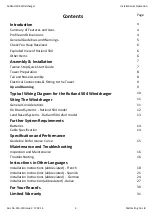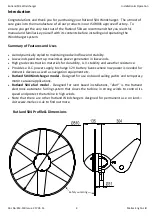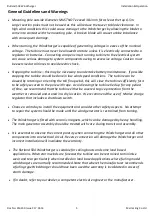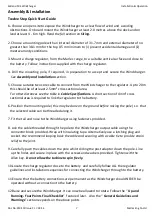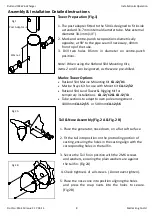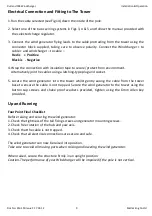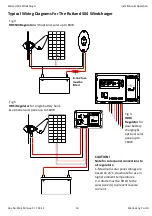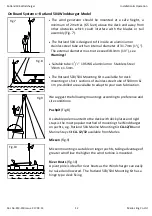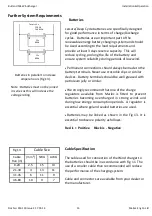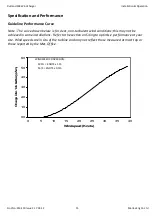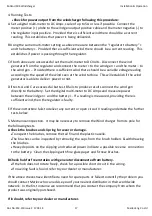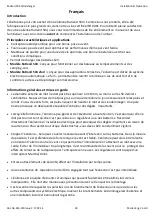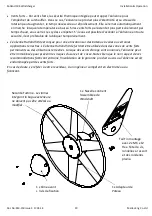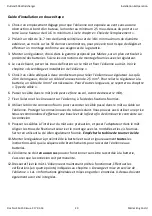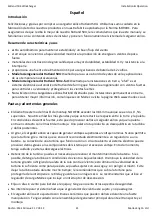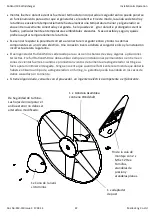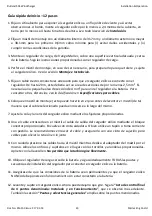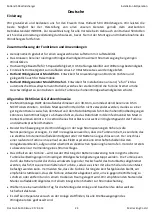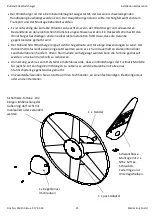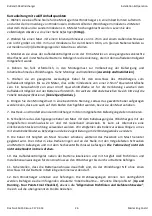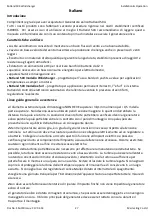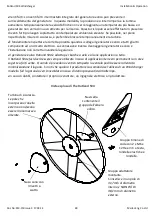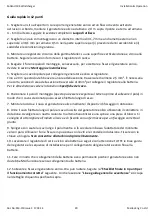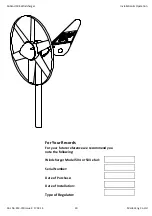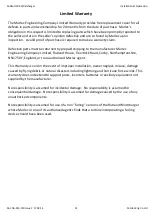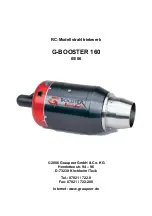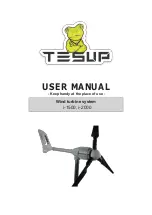
Rutland 504 Windcharger Installation & Operation
Doc No: SM-150 Issue C 17.03.14 16 Marlec Eng Co Ltd
Maintenance and Troubleshooting
Inspection and Maintenance
The Rutland 504 requires no scheduled maintenance but an annual inspection should be
carried out to monitor the general condition of the system to ensure the electrical and
mechanical integrity and safety of the system.
WARNING!
Before inspection, the turbine should either be lowered to the ground or tied to
prevent the generator from turning. To stop the generator from turning proceed as follows:
1. Turn the wind generator out of the wind (180°) using the tail. A hole is provided in the tail
fin to assist in this. The generator will eventually slow down.
2. Tie a blade to the mounting pole to prevent it from rotating.
Whilst the generator is stationary, the following routine checks should be performed:
1. Check all nuts, bolts and screws for tightness.
2. Check the yaw axis for free rotation.
3. Check tower assembly for condition.
4. Check the tension of the guy wires if applicable. The tension of guy wires should be checked
frequently during the first year.
5. The unit can be wiped with a mild detergent and rinsed with water to remove
dirt and debris.
Note : The Wind charger is designed for continuous running, this achieves maximum resistance
to water ingress. Should the unit be restrained for any extended period it is recommended that
it be covered or removed to a dry location.
Trouble Shooting
In the unlikely event that your Rutland 504 should develop a defect, the turbine should first be
tied to prevent the blades from turning to perform the static tests below. (Follow the procedure
described in the Inspection and Maintenance section). It will be necessary to let it run for the
tests to check for power production.
1
. Read the 12 Steps Quick Start Guide
and
Up and Running
sections and be satisfied that
your system complies.
2
. Is there sufficient wind?
The Rutland 504 needs 5 knots wind speed to start charging. The
wind speed across the turbine blades may be greatly reduced in a marina or built-up area
compared with the reading on a masthead anemometer or weather reports.
3. Static Tests:
x
Is the battery in good condition?
Check the voltage and electrolyte level of each battery.
x
Check electrical continuity
throughout the system, especially corrosion and poor
connections in cable joins and connector blocks.
Summary of Contents for Rutland 504 efurl
Page 2: ......


